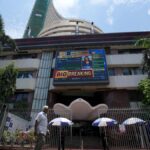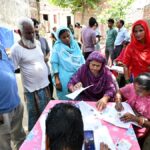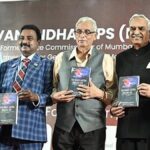Muslim voters are often said to vote en-bloc. This assumption has been applied to the Muslims of Seemanchal in Bihar as well, largely due to the surprising rise of Asaduddin Owaisi’s party All India Majlis-e-Ittehadul Muslimeen (AIMIM) in 2020.
However, this is hardly the case. Around 28% of Bihar’s 2.31 crore Muslim population live in the Seemanchal region comprising Kishanganj, Katihar, Araria and Purnia districts. While almost all of them are from the Sunni denomination of Islam, the community is not homogeneous.
Caste composition
Muslims in Seemanchal are broadly divided into three castes — the Surjapuri, Shershahbadi and Kulhaiya castes. Although the differences between them are not very obvious to an outsider, these three caste groups differ culturally, rarely intermarry, and speak distinct dialects. The dialects originate from a mixture of Maithili and Bangla, diluted with words borrowed from Hindi and Urdu. The dialect spoken by Shershahbadis is closer to Bangla, while the Kulhaiya dialect is closer to Maithili. Surjapuri lies somewhere in the middle, with heavy dilution from Urdu words.
However, the biggest difference between the caste groups depends on which Sunni Islamic movement they follow — Barelvi, Deobandi, or Ahle Hadith. Surjapuris are divided between Barelvi and Deobandi, with a larger section leaning towards the former. The Kulhaiyas are predominantly Deobandi, while Shershahbadis largely follow Ahle Hadith. Barelvi, Deobandi and Ahle Hadith are three Sunni Islamic movements in South Asia. Barelvis embrace Sufism, veneration of saints, and the celebration of Prophet Muhammad’s birthday. Deobandis are more reformist, discourage excessive saint veneration and innovations, while maintaining some Sufi influence in a stricter form. Ahle Hadith adherents rely directly on the Quran and Hadith, opposing any religious customs not found in early Islamic texts.
Earlier, all three groups — the Surjapuri, Shershahbadi and Kulhaiya — were identified as Shaikh, one of the three castes categorised as upper-caste Muslims along with Pathan and Syed. However, due to the historical backwardness of the region and changes in political representation, Shershahbadis and Kulhaiyas were included in the list of Extremely Backward Classes (EBC), while Surjapuris remained in the Backward Caste category. The Bihar caste Census 2023 identifies Surjapuris as the third largest Muslim caste group (after Shaikh and Ansari) with a population of around 24.5 lakh people. The Shershahbadis have around 13 lakh, and Kulhaiyas, 12.5 lakh. There is also a fourth caste derived from Shaikh called the Sekhra, with a population of about 2.5 lakh in Seemanchal. In addition, there are Muslims from different castes who have migrated from different parts of Bihar to Seemanchal for business purposes. They are collectively referred to by locals as Pachhimas, meaning Westerners or those coming from the west, particularly from the region around the Begusarai district.
The Surjapuri Muslims mainly live in Kishanganj, Purnia and Katihar districts. Araria is dominated by Kulhaiya Muslims, with a considerable population also living in Purnia. Shershahbadi Muslims primarily live in Katihar, with a considerable presence in Kishanganj.
Shifting trends
Caste awareness and voting along caste lines is a recent phenomenon among the Muslims of Seemanchal. These political shifts began around 2000, and by 2010, the change had become visible.
Before 2000, there were Muslim MLAs from all four prominent castes in Seemanchal. Mohammad Hussain Azad, Rafique Alam, Abdul Jalil Mastan (Amour), Abdus Subhan, Islamuddin, Najmuddin, Mohammad Suleman, Abdul Jalil (Kadwa) and Usman Ghani from the Surjapuri caste; Mohammad Taslimuddin, Hasibur Rahman, Motiur Rahman, Halimuddin Ahmed, Muzaffar Hussain and Beula Doza from Kulhaiyas; Mohammad Shakoor, Mubarak Hussain and Mansoor Alam from Shershahbadis; and Mohammad Azimuddin from the Sekhra caste were elected MLAs from different constituencies of Seemanchal. Many of them got elected from seats not dominated by their castes.
However, this well-distributed representation, which reflected the saying Jiski jitni sankhya bhaari, Uski utni hissedaari (the greater one’s numbers, the greater one’s share), was not reflected at the Lok Sabha level. The Kishanganj Lok Sabha constituency, dominated by Surjapuri Muslims, was represented either by Kulhaiya leaders like Mohammad Tahir, Jamilur Rahman, Halimuddin Ahmed and Mohammad Taslimuddin, or by upper-caste Muslim leaders such as Syed Shahabuddin, Syed Shahnawaz Hussain, or parachute politicians like M.J. Akbar.
It took a tall Surjapuri leader, Maulana Asrarul Haque Qasmi, a well-known Islamic scholar who served as general secretary of the Jamiat Ulema-e-Hind, 24 years to get elected from Kishanganj. He first contested in the 1985 byelection but could only win in the 2009 general elections, when Surjapuri Muslims collectively rallied behind him against the incumbent Mohammad Taslimuddin, a Kulhaiya. After that, in 2014, Mr. Taslimuddin shifted his base to neighbouring Araria, a Kulhaiya-dominated constituency.
In subsequent elections, Surjapuri Muslims continued to dominate the Kishanganj seat, reaching a peak in the last Lok Sabha elections which saw a triangular contest between three Surjapuri Muslim candidates — Mohammad Jawaid from the Congress, Mujahid Alam from the Janata Dal (United), and Akhtarul Iman from the AIMIM. Meanwhile, Mr. Taslimuddin’s family has maintained dominance in Araria, winning or losing in close contests since 2014. Katihar’s long wait for local Muslim representation in Parliament continues as Tarique Anwar, a Syed from Arwal, has held sway there for 50 years.
The present scenario
Since 2000, the number of Surjapuri MLAs in the Bihar assembly has ranged between five and seven, Kulhaiya between one and two, Sekhra between zero and one, while MLAs from the most vilified Shershahbadi community has dropped from two to zero.
Out of the 24 Assembly constituencies in Seemanchal, 11 were won by Muslim MLAs in 2020. Of these, six are Surjapuri, two Kulhaiyas, one Sekhra, and two upper-caste Muslims. The number of Muslim MLAs in the region was the same in 2015, but then there were seven Surjapuri MLAs and only one upper-caste Muslim MLA. Purnia’s Baisi seat is currently represented by Syed Ruknuddin Ahmad, an upper-caste Muslim whose family has traditionally managed a local dargah, a shrine revered by Barelvi Muslims. Senior Congress leader Shakeel Ahmad Khan, also an upper-caste Muslim, has consecutively won from Katihar’s Kadwa seat.
Just like the Kishanganj Lok Sabha seat, in many seats the caste equation has now stabilised. All four Assembly seats in the Kishanganj district — Kochadhaman, Bahadurganj, Kishanganj and Thakurganj — along with Katihar’s Balrampur, are dominated by Surjapuri Muslims. Araria district’s Jokihat and Araria are traditional Kulhaiya seats. Purnia’s Amour and Baisi are largely Surjapuri-dominated but have a significant Kulhaiya population. Katihar’s Pranpur has a mix of Surjapuri and Shershahbadi populations, while Kadwa has a large Surjapuri population. Katihar’s Barari, Manihari and Korha, and Kishanganj’s Thakurganj and Kishanganj seats, have a considerable Shershahbadi population.
Sekhra Muslims are numerically significant in the Araria assembly seat, although the only current Sekhra MLA represents Purnia’s Kasba, which has a notable Kulhaiya and Shershahbadi presence.
It is now almost impossible for a non-Surjapuri Muslim candidate to win from Kochadhaman, Bahadurganj, Kishanganj, Thakurganj and Balrampur. Similarly, a non-Kulhaiya Muslim cannot hope to win from Jokihat, and the Araria assembly seat is also difficult for a non-Kulhaiya Muslim candidate. Amour and Baisi, though Surjapuri-dominated, often see strong Kulhaiya candidates. Pranpur is the only seat where a prominent Shershahbadi Muslim candidate has appeared in the last few elections. Manihari is reserved for Scheduled Tribes, Korha for Scheduled Castes, while none of the major alliances now field Muslim candidates in Barari.
The Mahagathbandhan (grand alliance) in Bihar, which is the Opposition alliance, comprising the Rashtriya Janata Dal, Congress, Left parties and others will respect the caste dominance in their ticket distribution this time as well. The AIMIM which had tasted success in five seats of Seemanchal by unifying Surjapuri-Kulahaiya votes is making the same attempt again in these elections. The AIMIM Bihar chief Akhtarul Iman is a prominent Surjapuri leader and the incumbent MLA from Amour. However, the party has announced a Kulhaiya candidate in the neighbouring Baisi seat, in an attempt to unite Surjapuri-Kulhaiya votes in the region, and it is given that the party’s candidate in the neighbouring seat, Jokihat, will be a Kulhaiya.
Tanzil Asif is the founder of Seemanchal-based news platform Main Media.




















